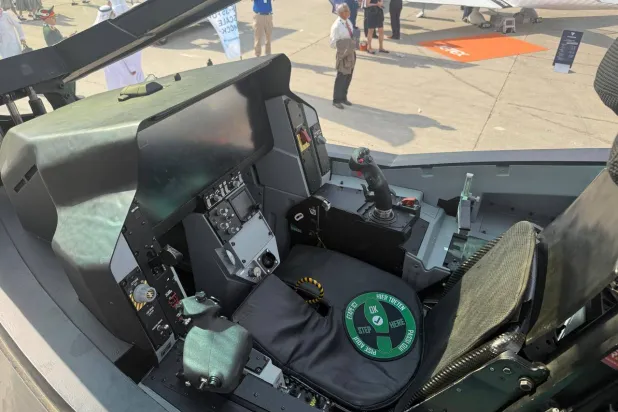US President Donald Trump’s announcement approving the sale of F-35 fighter jets to Saudi Arabia has made the Kingdom the 21st nation to join the select group operating what is widely regarded as the world’s most advanced combat aircraft.
The American manufacturer Lockheed Martin describes its stealth F-35 as “the most advanced fighter jet in the world,” citing performance data and operational figures that highlight the aircraft’s expanding global presence and its central role in 21st Century air-defense architecture.
According to the latest figures as of November 2025, the F-35 program has widened to include 20 partner countries, with more than 1,255 aircraft delivered so far.
Data shows that the fighter – examined by Asharq Al-Awsat during an exclusive tour at the Dubai Airshow – has entered widespread operational service, with 50 air and naval bases activated to host and operate it. A total of 11 countries are now flying the jet from their own soil.
Lockheed Martin estimates that by 2035, Europe alone will operate more than 700 F-35s, while the Indo-Pacific will field more than 300, underscoring the aircraft’s pivotal role in the modernization strategies of US allies.
The company positions the F-35 as a highly versatile, multi-role fighter featuring an extremely low radar cross-section. Its stealth characteristics rely on precision shaping, reduced engine heat signature, and internal carriage of weapons and fuel to maintain low observability and minimize detection by conventional sensors.
Technically, the jet carries an advanced suite of sensors, including an AESA radar, the Distributed Aperture System (DAS), the Electro-Optical Targeting System (EOTS), and sophisticated electronic-warfare capabilities.
Through data-fusion technology, the pilot receives a unified, real-time operational picture of the battlespace, improving situational awareness, accelerating decision-making, and increasing the effectiveness of engagements.
Lockheed Martin stresses that the F-35 is built to function within a broad, integrated combat network. The aircraft serves as a secure communications and information-sharing platform, transmitting imagery and data simultaneously with air, land, and sea assets, reinforcing modern concepts of network-centric warfare.
The F-35 can carry a broad array of munitions, whether inside its two internal bays for maximum stealth or on external hardpoints in permissive environments, with a total payload capacity exceeding 18,000 pounds.
Program data shows that the aircraft has become a mainstay of 16 air forces and military services worldwide, completing more than 691,000 sorties since entering service and participating in numerous major international exercises.
